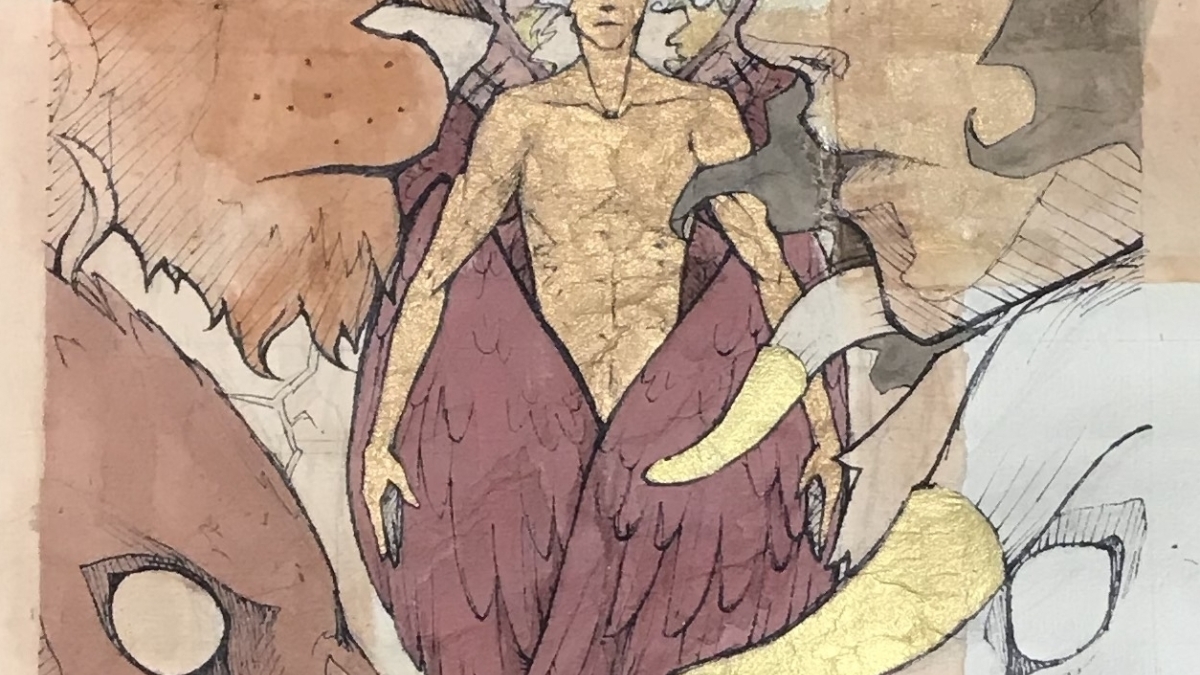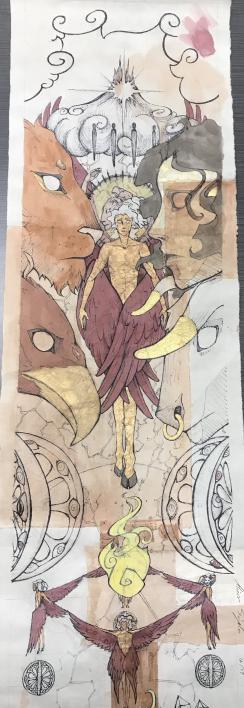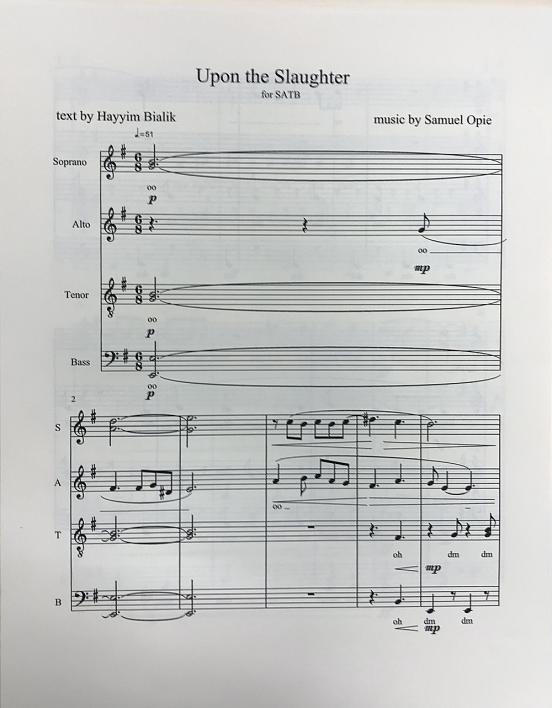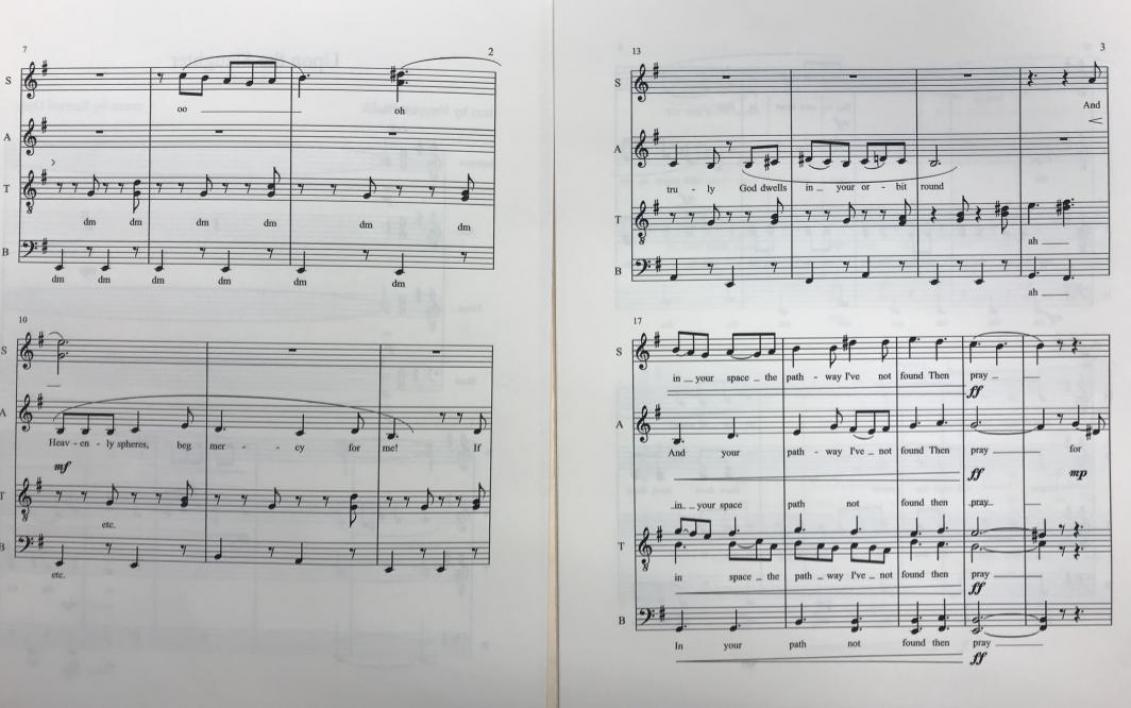ASU Jewish studies students create unique final projects with art, music

Student Alison Sigala channeled medieval art for her scroll project depicting images from the Hebrew Bible.
Last semester, two Arizona State University students in Jewish studies courses used their final project assignments as opportunities for creative expression, exhibiting the material that they learned in their courses through art and music.
Rather than simply writing a research paper on a topic of Judaism that their class had studied during the semester, students Alison Sigala and Samuel Opie channeled their talents and areas of academic study, producing something truly unique.
Sigala is an intermediate art majorin the Herberger Institute for Design and the Arts who is passionate about studying and producing art, such as drawings. Opie is a Russian language major and interested in Russian history and culture. He also sings for an a cappella group, writes songs and creates music.
History lecturer Timothy Langille, who teaches courses on the Hebrew Bible and Jewish history at ASU's School of Historical, Philosophical and Religious Studies, said these two students definitely went above and beyond the final project requirements.
While taking REL/JST 315: Hebrew Bible, Sigala crafted a highly elaborate scroll with medieval-like art, which portrays the stories from the first two chapters of Ezekiel in the Hebrew Bible. It also relates to one of the units discussed in this class, “book cultures versus scroll cultures,” according to Langille.
Sigala is fascinated by art from the classical and Renaissance eras and “flipping stereotypes on their heads.” Most works of art during these historical periods consist of impeccable and “pretty” images portraying biblical events using things like head-halos and gold-leaf art, Sigala said. Yet, the scroll, which she created on mulberry printmaking paper using acrylic paints and sharpie ink, is a lot more raw and visceral with its colors and imagery.
Her artwork depicts the biblical scene of Ezekiel receiving an incredible vision from God, who calls him to become a prophet. In this story about Ezekiel’s journey, “it's really hard to imagine that, from words to actual pictures, because it’s described very strangely,” Sigala said. Ezekiel receives a scroll from God and then eats it, and Sigala said this inspired her to use a scroll and artistically represent how this vision would actually look.
From the top to the bottom of the scroll, Sigala took the events described in Ezekiel and chronologically translated the language into a visually captivating representation.
The “Call to Prophecy” from Ezekiel 1 contains some of the most “over-the-top imagery in the Hebrew Bible,” in Langille’s opinion. “So to actually conceptualize it and produce this is pretty amazing,” he said.
Opie, who was taking the course HST/JST 230: Intro to Jewish Civilization, used an online computer program to write sheet music dedicated to one of the poems written about the Russian pogroms that erupted in 1903. "Upon the Slaughter," written by famed Hebrew poet Hayim Nahman Bialik, is based on the deadly anti-Jewish riots that occurred in Kishinev, which was the capital of the Russian Empire at the time.
Opie included four different vocal parts in his sheet music: soprano, alto, tenor and bass.
Langille was thrilled when he realized they were channeling what they learned in class into original forms of art.
“It shows they care," he said. "It’s exciting for a professor. When you get something exceptional like this, it brings the same joy of a flawless, well-written research paper.”
More Arts, humanities and education

Honoring innovative practices, impact in the field of American Indian studies
American Indian Studies at Arizona State University will host a panel event to celebrate the release of “From the Skin,” a…

ASU alum's humanities background led to fulfilling job with the governor's office
As a student, Arizona State University alumna Sambo Dul was a triple major in Spanish, political science and economics. After…

ASU English professor directs new Native play 'Antíkoni'
Over the last three years, Madeline Sayet toured the United States to tell her story in the autobiographical solo-…



